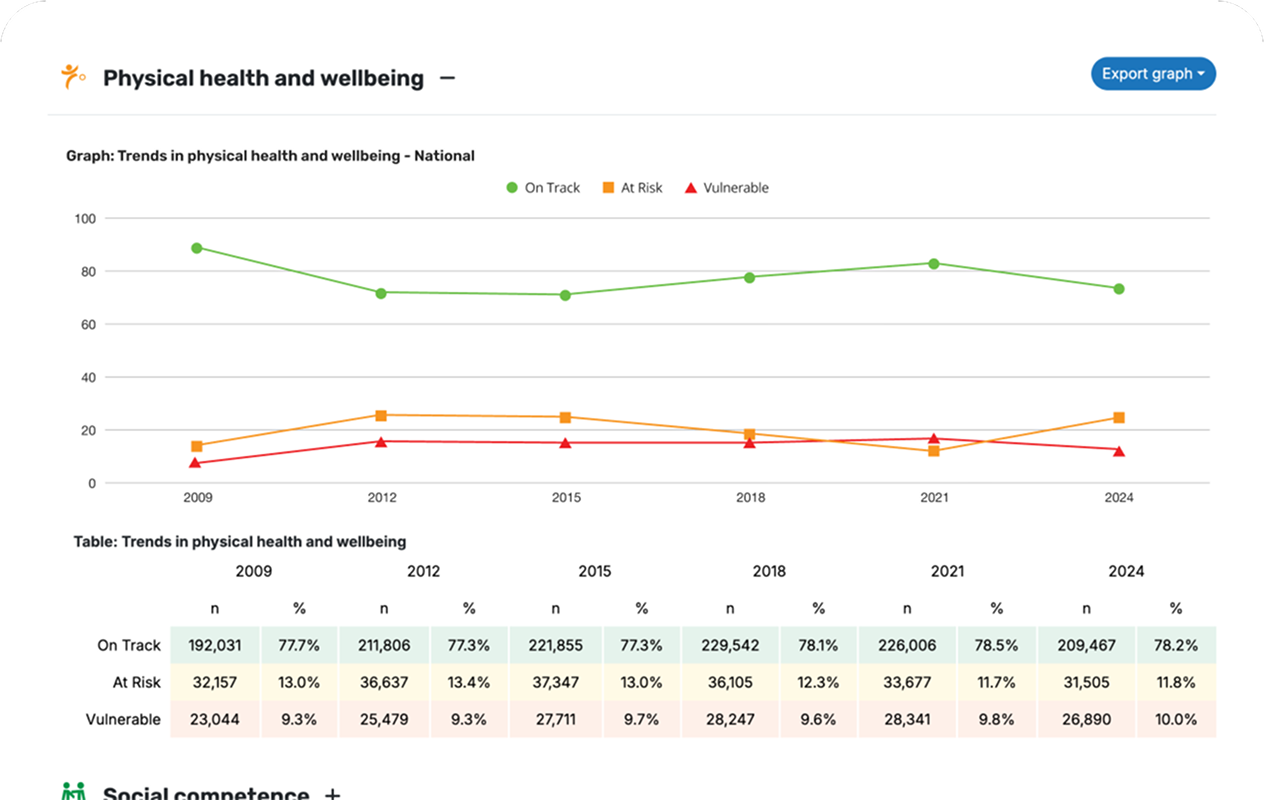
For each of the five domains, children are classified as ‘developmentally on track’, ‘developmentally at risk’ or ‘developmentally vulnerable’.
Scores from the first AEDC data collection in 2009, provide a reference point against which later AEDC results can be compared over time.
Children's data are combined and reported publicly at a community, state/territory and national level. Eligible participating schools also receive AEDC results for their students.
Data for individual children is not reported in the AEDC.
Community Data Explorer
Navigate the AEDC Community Data Explorer and understand the data.

